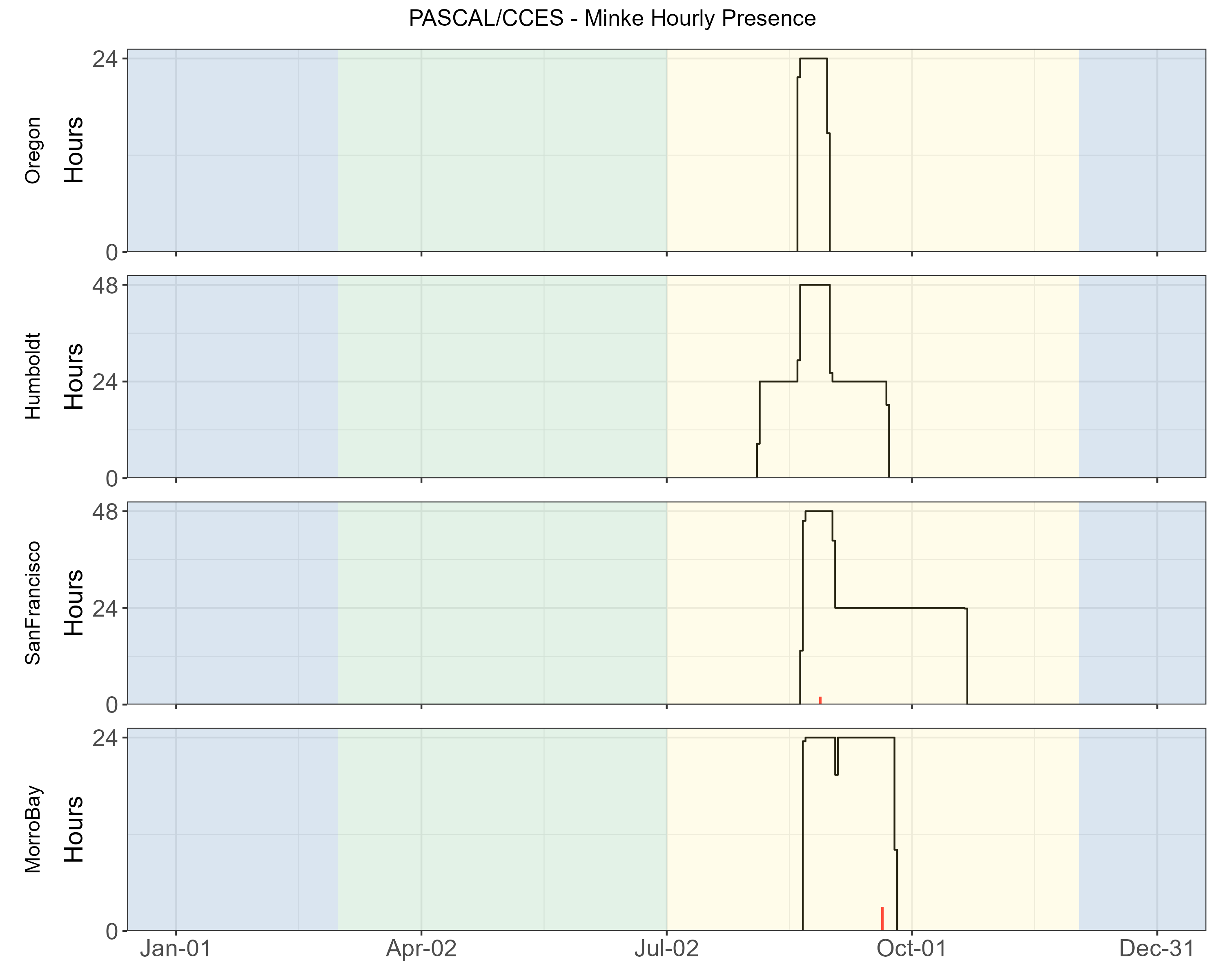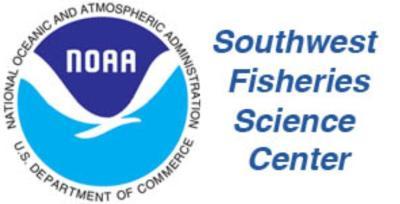Minke Whales
There were no detections of minke whale boings during the Adrift study, and only a few minke whale detections in the CCES and PASCAL datasets (Figure 1). Minke whale boing calls are considered ‘song’ and typically detected during the winter and early spring months where our study has limited effort (Rankin and Barlow 2005). In November 2023 there was a minke whale sighting near Morro Bay; however, there were no boings detected from our offshore drifts. The lack of detections could be due to low population densities or that minkes use coastal waters. Research is needed to improve our knowledge of the minke whale vocal repertoire.

Detailed methods are provided in our Adrift Analysis Methods.
References
Rankin, Shannon, and Jay Barlow. 2005. “Source of the North Pacific “Boing” Sound Attributed to Minke Whales.” The Journal of the Acoustical Society of America 118 (5): 3346–51. https://doi.org/10.1121/1.2046747.
